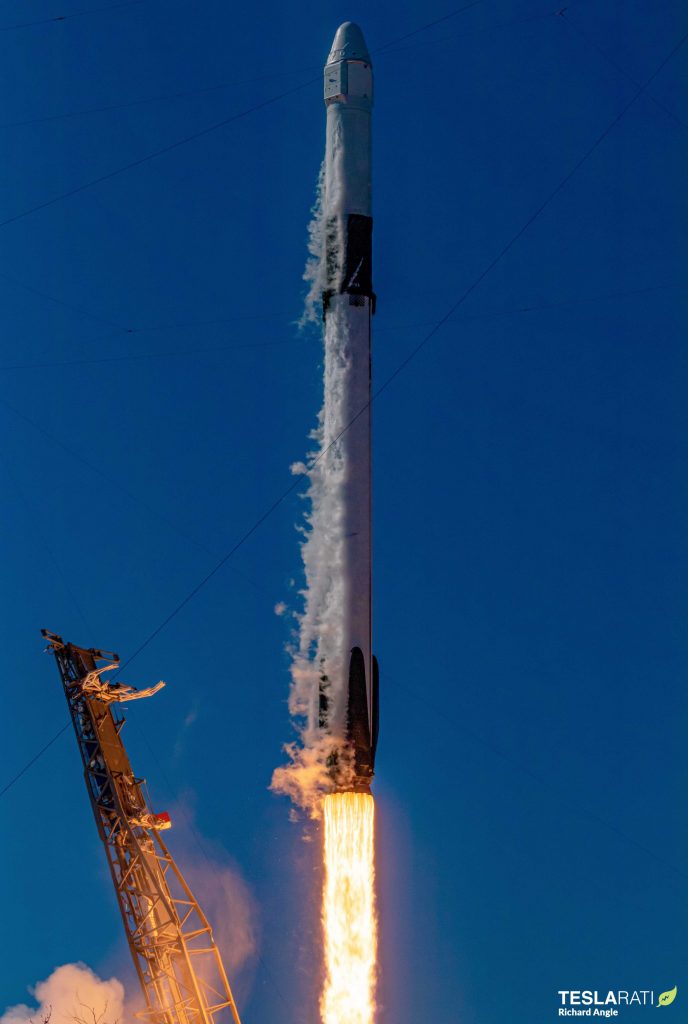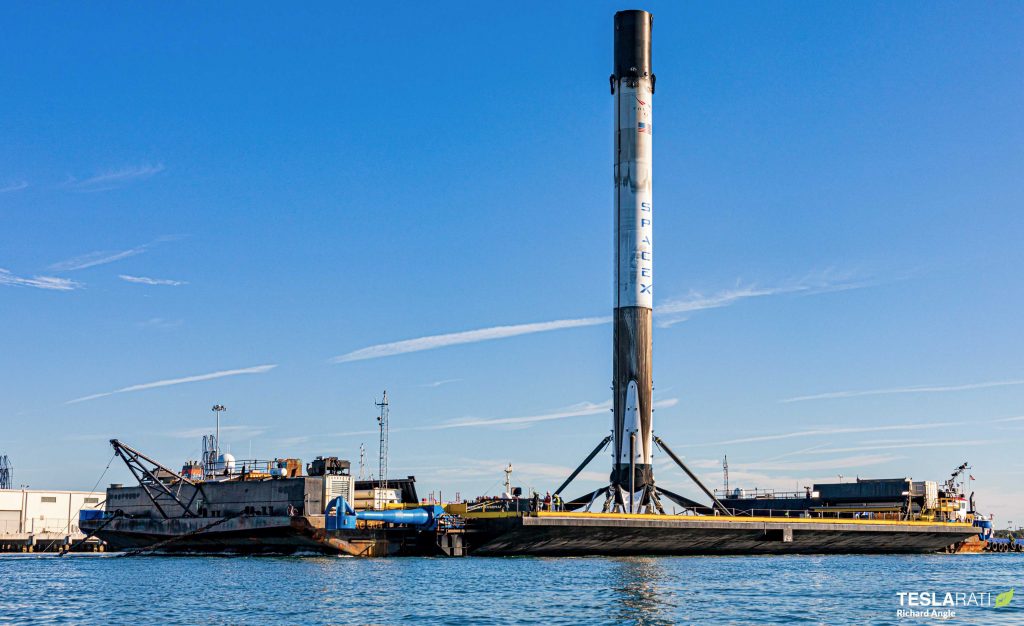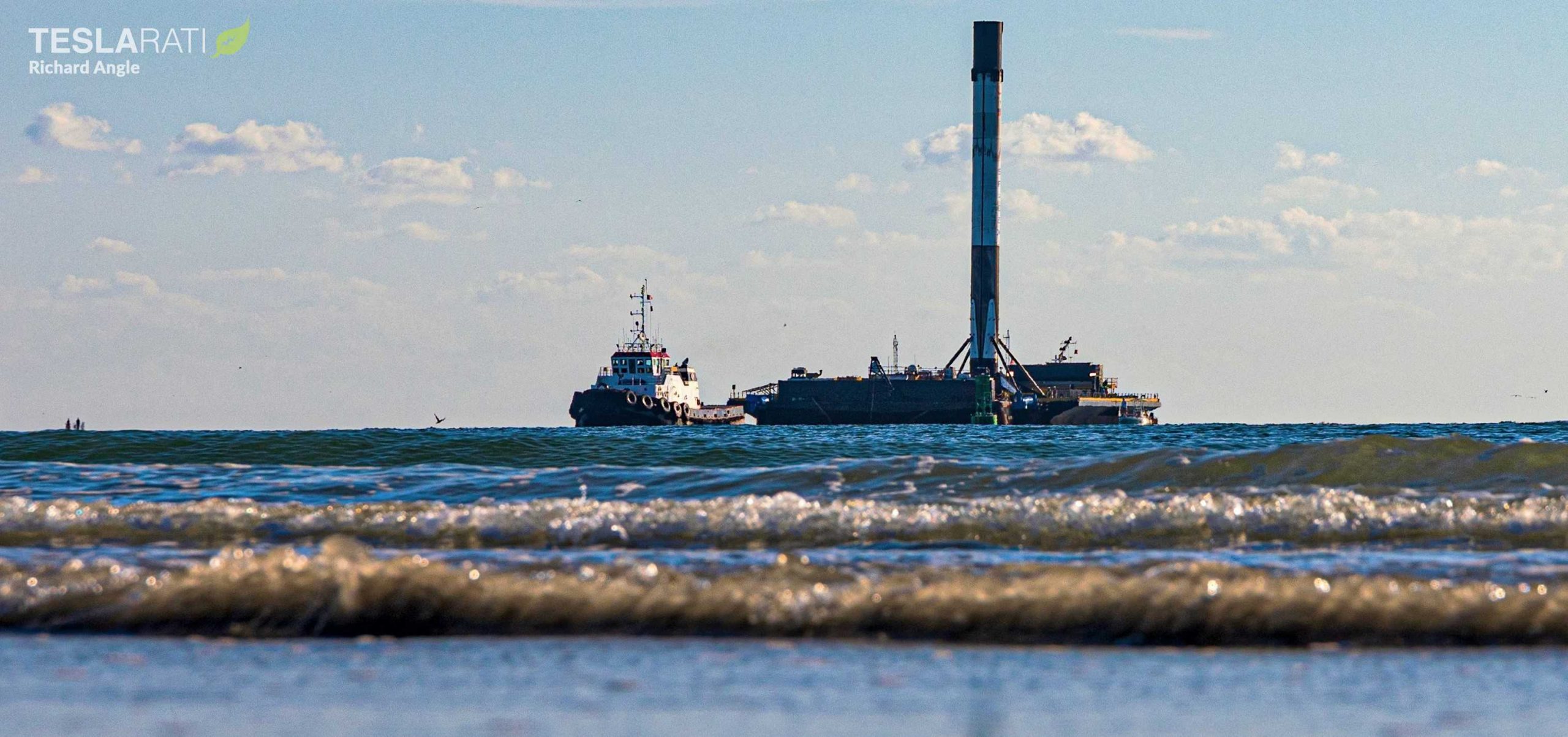
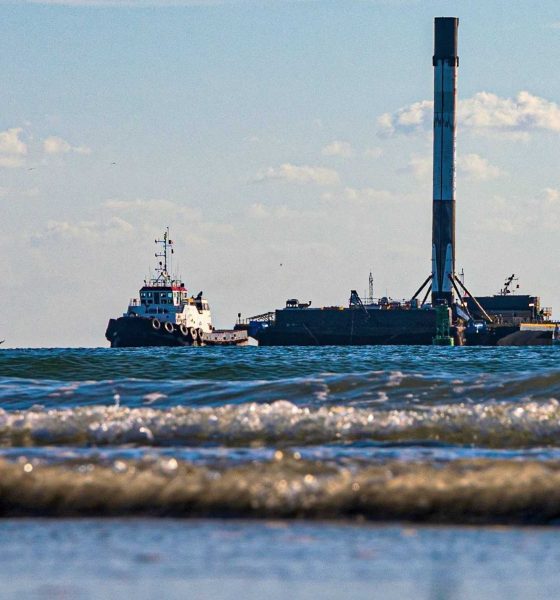
News
SpaceX's latest reusable rocket booster returns to port to prepare for next launch
The first new Falcon 9 booster SpaceX has debuted in almost half a year safely returned to port after a successful first launch and landing, setting the reusable rocket up to fly again in the near future.
On December 5th, after a brief 24-hour weather-related delay, new Falcon 9 booster B1059 lifted off on its first mission, successfully sending flight-proven Cargo Dragon capsule C106 to orbit for the third time before the rocket slowed itself down and landed on drone ship Of Course I Still Love You (OCISLY).
Over the next three or so days, the SpaceX spacecraft gradually boosted and tweaked its orbit to rendezvous with the International Space Station (ISS) and ultimately began its ISS approach and berthing maneuvers on December 8th. A few hours after that, ISS astronauts successfully ‘caught’ Dragon with the station’s massive robotic arm and gently berthed the spacecraft at an open port.
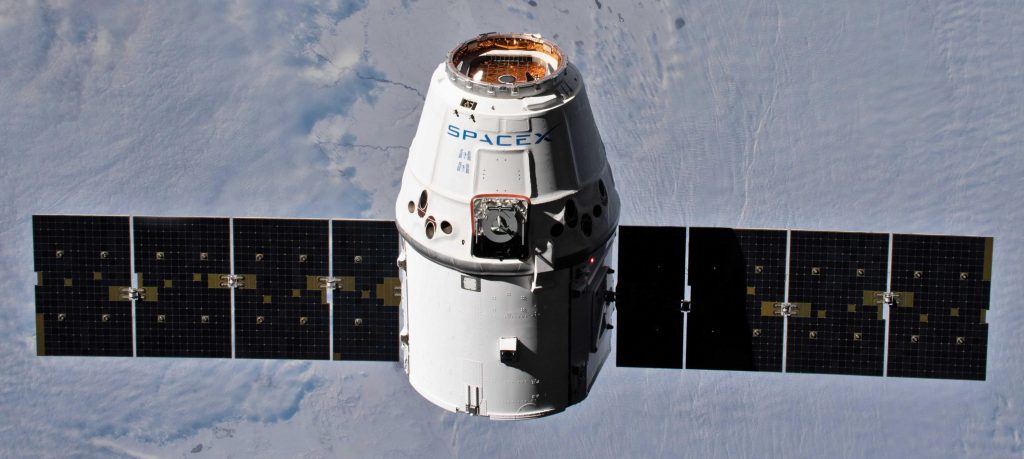
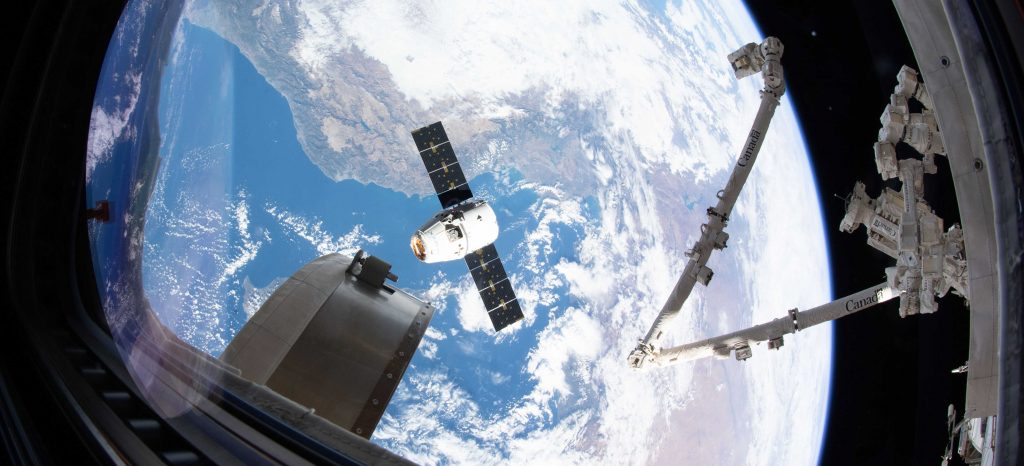
Less than a day before Dragon arrived at the ISS, effectively completing the majority of its CRS-19 resupply mission, the Falcon 9 booster that launched the spacecraft wrapped up a successful launch debut by returning to a different kind of port. Falcon 9 B1059 returned to Port Canaveral aboard drone ship OCISLY on the morning of December 7th and was quickly released from SpaceX’s robotic Octagrabber robot and lifted onto dry land.
SpaceX’s 13th successful Falcon booster recovery of 2019, B1059’s return to port also marked the first flight of a new Falcon booster since June 25th – almost half a year prior. By the numbers, B1059 was subjected to a relatively gentle atmospheric reentry prior to landing aboard OCISLY, meaning that it should be easier for SpaceX technicians and engineers to recertify the rocket and turn it around for its next launch.
Depending on where SpaceX and NASA stand, the booster’s second launch could happen anywhere from 2-4 months from now. Given that NASA currently allows SpaceX to fly reused boosters on NASA missions only if those boosters have exclusively flown NASA missions in the past, B1059 could end up supporting CRS-20, SpaceX’s next and last Cargo Dragon (Dragon 1) mission. CRS-20 is scheduled to launch no earlier than (NET) March 2020 and will be followed by the launch debut of Crew Dragon’s Cargo variant as soon as August 2020, another possibility for B1059’s second flight.

However, if SpaceX follows in the footsteps of CRS-19 and instead prioritizes rapid customer launches over saving a given gently-used booster for another NASA mission, B1059 could be a prime candidate for an extremely rapid turnaround, perhaps supporting an internal SpaceX Starlink launch or any number of other customer satellite launches in early 2020. On the other hand, it’s possible that B1059 suffered an unusually damaging reentry for unknown reasons, although it’s hard to judge from photos and a layperson perspective alone.
From a few angles, it almost appears as if B1059’s white paint was completely burned or scoured off in places, leaving a distinct transition between the edge of remaining paint and the booster’s distinctly metallic-looking skin underneath it. Falcon 9’s main structure is almost entirely built out of a high-performance aluminum-lithium alloy and sealed (and partially shielded) with a multilayer temperature and corrosion-resistant coating. If B1059’s tank coating was indeed partially burned off during reentry, SpaceX will almost certainly have to perform uniquely detailed inspections to verify the structural integrity of its propellant tanks, perhaps preventing a rapid (record-breaking) turnaround.
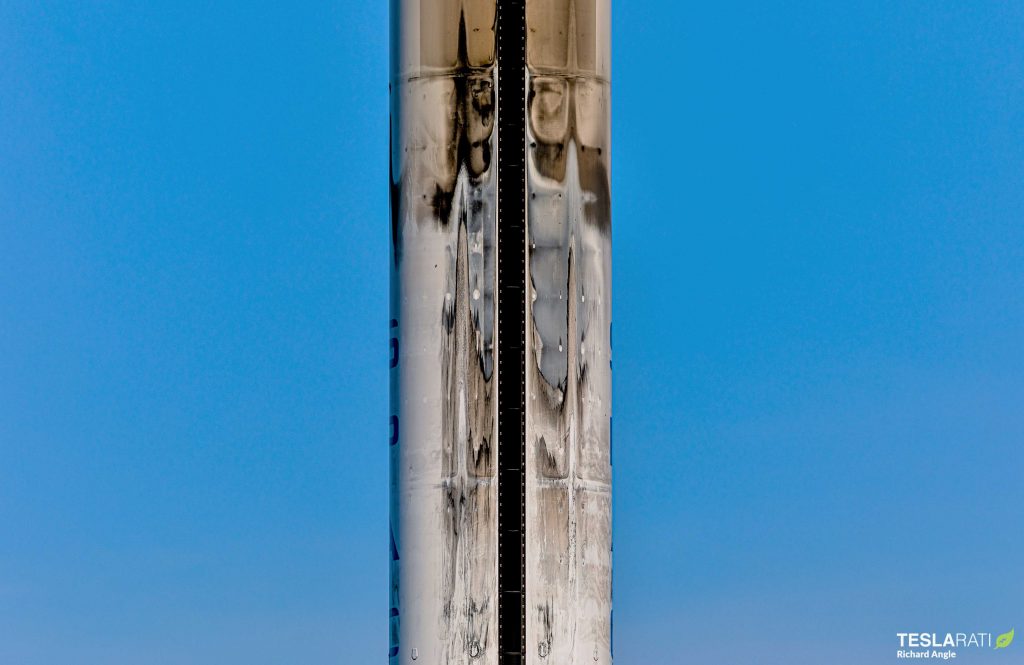
Either way, Falcon 9 B1059 was quickly lifted off of OCISLY and technicians even managed to retract all four of the new booster’s deployable landing legs, a great sign that SpaceX is confident that the booster is in fine shape. With the addition of B1059, SpaceX’s fleet of flight-proven, flightworthy Falcon 9 boosters is now eight strong – nine if Crew Dragon’s unflown Demo-2 booster is included. That fleet will continue to grow as SpaceX gradually introduces new boosters for increasingly rare military and NASA missions.
Check out Teslarati’s Marketplace! We offer Tesla accessories, including for the Tesla Cybertruck and Tesla Model 3.

Elon Musk
Starlink passes 9 million active customers just weeks after hitting 8 million
The milestone highlights the accelerating growth of Starlink, which has now been adding over 20,000 new users per day.

SpaceX’s Starlink satellite internet service has continued its rapid global expansion, surpassing 9 million active customers just weeks after crossing the 8 million mark.
The milestone highlights the accelerating growth of Starlink, which has now been adding over 20,000 new users per day.
9 million customers
In a post on X, SpaceX stated that Starlink now serves over 9 million active users across 155 countries, territories, and markets. The company reached 8 million customers in early November, meaning it added roughly 1 million subscribers in under seven weeks, or about 21,275 new users on average per day.
“Starlink is connecting more than 9M active customers with high-speed internet across 155 countries, territories, and many other markets,” Starlink wrote in a post on its official X account. SpaceX President Gwynne Shotwell also celebrated the milestone on X. “A huge thank you to all of our customers and congrats to the Starlink team for such an incredible product,” she wrote.
That growth rate reflects both rising demand for broadband in underserved regions and Starlink’s expanding satellite constellation, which now includes more than 9,000 low-Earth-orbit satellites designed to deliver high-speed, low-latency internet worldwide.
Starlink’s momentum
Starlink’s momentum has been building up. SpaceX reported 4.6 million Starlink customers in December 2024, followed by 7 million by August 2025, and 8 million customers in November. Independent data also suggests Starlink usage is rising sharply, with Cloudflare reporting that global web traffic from Starlink users more than doubled in 2025, as noted in an Insider report.
Starlink’s momentum is increasingly tied to SpaceX’s broader financial outlook. Elon Musk has said the satellite network is “by far” the company’s largest revenue driver, and reports suggest SpaceX may be positioning itself for an initial public offering as soon as next year, with valuations estimated as high as $1.5 trillion. Musk has also suggested in the past that Starlink could have its own IPO in the future.
News
NVIDIA Director of Robotics: Tesla FSD v14 is the first AI to pass the “Physical Turing Test”
After testing FSD v14, Fan stated that his experience with FSD felt magical at first, but it soon started to feel like a routine.

NVIDIA Director of Robotics Jim Fan has praised Tesla’s Full Self-Driving (Supervised) v14 as the first AI to pass what he described as a “Physical Turing Test.”
After testing FSD v14, Fan stated that his experience with FSD felt magical at first, but it soon started to feel like a routine. And just like smartphones today, removing it now would “actively hurt.”
Jim Fan’s hands-on FSD v14 impressions
Fan, a leading researcher in embodied AI who is currently solving Physical AI at NVIDIA and spearheading the company’s Project GR00T initiative, noted that he actually was late to the Tesla game. He was, however, one of the first to try out FSD v14.
“I was very late to own a Tesla but among the earliest to try out FSD v14. It’s perhaps the first time I experience an AI that passes the Physical Turing Test: after a long day at work, you press a button, lay back, and couldn’t tell if a neural net or a human drove you home,” Fan wrote in a post on X.
Fan added: “Despite knowing exactly how robot learning works, I still find it magical watching the steering wheel turn by itself. First it feels surreal, next it becomes routine. Then, like the smartphone, taking it away actively hurts. This is how humanity gets rewired and glued to god-like technologies.”
The Physical Turing Test
The original Turing Test was conceived by Alan Turing in 1950, and it was aimed at determining if a machine could exhibit behavior that is equivalent to or indistinguishable from a human. By focusing on text-based conversations, the original Turing Test set a high bar for natural language processing and machine learning.
This test has been passed by today’s large language models. However, the capability to converse in a humanlike manner is a completely different challenge from performing real-world problem-solving or physical interactions. Thus, Fan introduced the Physical Turing Test, which challenges AI systems to demonstrate intelligence through physical actions.
Based on Fan’s comments, Tesla has demonstrated these intelligent physical actions with FSD v14. Elon Musk agreed with the NVIDIA executive, stating in a post on X that with FSD v14, “you can sense the sentience maturing.” Musk also praised Tesla AI, calling it the best “real-world AI” today.
News
Tesla AI team burns the Christmas midnight oil by releasing FSD v14.2.2.1
The update was released just a day after FSD v14.2.2 started rolling out to customers.

Tesla is burning the midnight oil this Christmas, with the Tesla AI team quietly rolling out Full Self-Driving (Supervised) v14.2.2.1 just a day after FSD v14.2.2 started rolling out to customers.
Tesla owner shares insights on FSD v14.2.2.1
Longtime Tesla owner and FSD tester @BLKMDL3 shared some insights following several drives with FSD v14.2.2.1 in rainy Los Angeles conditions with standing water and faded lane lines. He reported zero steering hesitation or stutter, confident lane changes, and maneuvers executed with precision that evoked the performance of Tesla’s driverless Robotaxis in Austin.
Parking performance impressed, with most spots nailed perfectly, including tight, sharp turns, in single attempts without shaky steering. One minor offset happened only due to another vehicle that was parked over the line, which FSD accommodated by a few extra inches. In rain that typically erases road markings, FSD visualized lanes and turn lines better than humans, positioning itself flawlessly when entering new streets as well.
“Took it up a dark, wet, and twisty canyon road up and down the hill tonight and it went very well as to be expected. Stayed centered in the lane, kept speed well and gives a confidence inspiring steering feel where it handles these curvy roads better than the majority of human drivers,” the Tesla owner wrote in a post on X.
Tesla’s FSD v14.2.2 update
Just a day before FSD v14.2.2.1’s release, Tesla rolled out FSD v14.2.2, which was focused on smoother real-world performance, better obstacle awareness, and precise end-of-trip routing. According to the update’s release notes, FSD v14.2.2 upgrades the vision encoder neural network with higher resolution features, enhancing detection of emergency vehicles, road obstacles, and human gestures.
New Arrival Options also allowed users to select preferred drop-off styles, such as Parking Lot, Street, Driveway, Parking Garage, or Curbside, with the navigation pin automatically adjusting to the ideal spot. Other refinements include pulling over for emergency vehicles, real-time vision-based detours for blocked roads, improved gate and debris handling, and Speed Profiles for customized driving styles.

